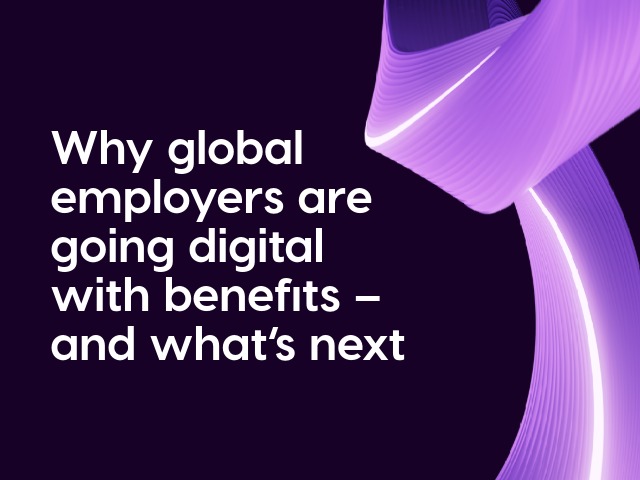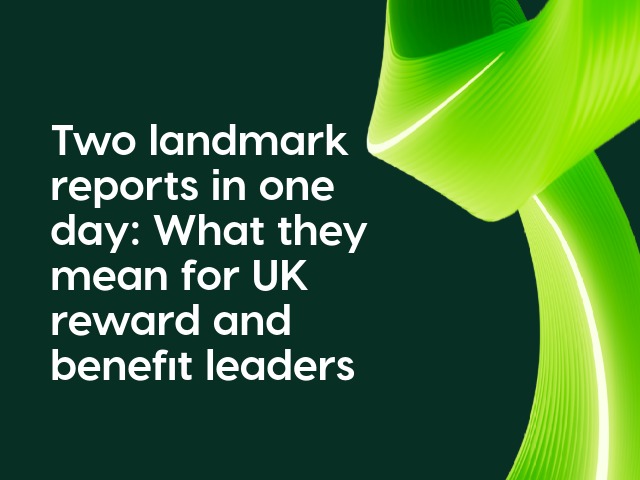
What we do and don’t know about the EU Pay Transparency Directive
04.03.25
As the EU Pay Transparency Directive continues to take shape, organisations will need to be proactive in understanding its requirements. This legislation is set to redefine how companies approach pay transparency, gender pay gap reporting, and the communication of pay structures to employees. While the directive provides a clear framework in some areas, many questions remain around country-specific implementations, worker categorisation, and how benefits will be valued.
Based on questions asked during our webinar ‘The EU Pay Transparency Directive: Are you ready for a new conversation about total reward?’, we explore both the knowns and unknowns of the directive and how businesses can prepare for the changes ahead.
What we know about the EU Pay Transparency Directive
The EU Pay Transparency Directive introduces significant changes that employers must prepare for. Some of these include:
Salary transparency: Employers must disclose pay ranges to new hire applicants, provide information on the starting salary and cannot inquire about salary histories. Current employees will be able to request information about average pay levels, segmented by gender and worker categories.
Proactive communication: Organisations must inform employees about how pay is determined and how pay progression is assessed, fostering trust and understanding and creating a great employee experience that allows for flexibility.
Gender pay gap reporting: Companies with 100+ employees in an EU country must calculate and report their gender pay gaps. If the pay gap exceeds 5% without justification, corrective action within six months or joint pay assessments with worker representatives are required.
Implementation timeline: The directive will be phased in, beginning with the largest employers, who are expected to start reporting by June 2027. It’s important to note that the 100-employee threshold applies to each EU country individually, not cumulatively across the EU.
Impact on benefits: Employers must review their benefits offerings to ensure they comply with the directive. For instance, if an organisation funds annual health assessments for senior roles while others self-fund, they must ensure these practices can be justified on objective, non-gendered grounds. This calls for a thorough review of benefits administration, aligning with the directive’s push for better access to employee benefits data.
What we don’t know (yet) about the EU Pay Transparency Directive
While the directive outlines significant changes in pay transparency, several elements remain unclear as organisations prepare for its implementation:
Legislation variability: Each EU member state must adopt the directive by June 2026, but specific implementation details could vary widely. Countries like Belgium and France already have gender equity legislation, which could lead to discrepancies like differing reporting thresholds (for example, the current requirement for companies with 50 employees in certain countries to report on their pay gap).
Potential for inconsistent standards: The variability in how different EU member states may interpret and implement the directive could lead to inconsistent standards. This may pose challenges for organisations operating across multiple countries, making it crucial to stay updated on each country’s specific requirements.
Country-specific reporting requirements: Organisations operating in multiple EU countries may face the challenge of country-specific reporting guidelines. It remains unclear if companies will need to report separately for each entity or if consolidated reporting will be allowed. Clarity on this matter will depend on forthcoming local legislation.
Worker categorisation: How countries will define and group categories of workers for reporting purposes needs clarifying; whether classifications will be based on job grades, family, or a combination of both is still to be decided. Companies will need to rely on their existing job levelling structures, ensuring that the criteria used are objective and non-gendered.
Details on pay and benefits valuation: Uncertainty remains over how pay and benefits, like pensions and supplementary benefits, will be valued in reporting. With various potential interpretations, organisations must consider the implications for both mandatory and employer-specific benefits as they navigate the new legislation.
Organisations need to act now to ensure compliance
With a June 2026 deadline for local legislation and the first wave of reporting beginning a year later, organisations need to act now to ensure compliance.
To delve deeper into the insights shared by Adam Mason, EVP at Benifex, and Elouise Rolo, Director of Global Benefits at Sequoia on this directive, watch the full on demand webinar recording, ‘The EU Pay Transparency Directive: Are you ready for a new conversation about total reward?’.
For more insights into the EU Pay Transparency Directive and why global organisations are using Total Reward Statements as the core pillar of their strategy, read our blog.


